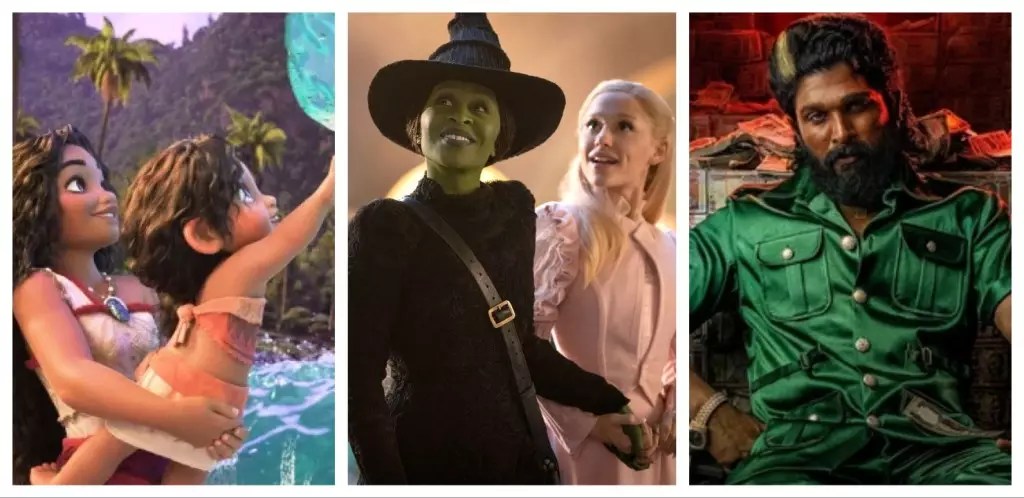The cinematic landscape is constantly evolving, and few films exemplify this phenomenon better than Disney’s recent hit sequel, Moana 2. With a remarkable global revenue milestone, surpassing $600 million within mere weeks of its release, the film not only showcases Disney’s continued dominance in the animated genre but also highlights the significance of international markets in today’s box office dynamics. The achievement of an equal split in gross revenues, with $300 million from domestic audiences and $300 million internationally, reflects a broadened appeal that extends beyond familiar borders.
Moana 2’s international performance has set new records, particularly in Japan, where it achieved a staggering $6.5 million debut. This figure marks the largest opening for a non-local animated title in 2024 and establishes Moana 2 as one of the top three launches for Walt Disney Animation Studios, trailing only behind the iconic Frozen and Frozen 2. Such accomplishments underscore how well-crafted narratives resonate with global audiences, a factor that must be considered by studios aiming to replicate this success.
The film’s ability to surpass the entire run of its predecessor, Moana, within weeks is another testament to both the growth of its franchise and the effective marketing strategies employed by Disney. The inclusion of key statistics about its standing among other releases, such as becoming the No. 5 worldwide film of 2024, also illustrates the shifting tides in cinematic preferences, where sequels and familiar franchises are likely to dominate viewer interest.
The staggering figures reported for Moana 2 are indicative of a larger trend: the increasing importance of international markets. These figures are not merely supplemental revenue streams; they are becoming the backbone of many blockbuster films. The success of Moana 2 across Europe, Australia, and Latin America highlights the diverse audience preferences that filmmakers must cater to.
Further emphasizing this point, other films like Universal’s Wicked and the Indian blockbuster Pushpa 2 – The Rule exemplify the international marketplace’s significant role. Wicked has crossed the $400 million mark worldwide and is on track to become the largest non-sequel of the year. Meanwhile, the Indian action drama Pushpa 2 is breaking records both domestically and internationally, with projections indicating a potential $90 million global debut. Such overwhelming success across varied demographics undeniably portrays a growing trend: audiences worldwide are increasingly seeking out diverse narratives.
Despite the positivity surrounding these releases, challenges remain for studios and distributors. Market fluctuations, competition from both local and global players, and the logistics of simultaneous releases often create hurdles. For instance, while Moana 2 achieved inspiring numbers, it also faced a notable 41% drop in overseas earnings. This decline begs the question of sustainability—can a film maintain its momentum without falling prey to the usual post-opening weekend slump?
Moreover, we witness a shift in how the cinema experience is marketed and consumed. For example, the performance of the film in IMAX formats showcases a selective viewing preference, with audiences quickly gravitating towards cinematic experiences that enhance visual storytelling. The fact that Pushpa 2 had a solid IMAX debut highlights a keen interest among unique content offerings, which could be leveraged by studios keen on maximizing revenue streams.
As the success stories of Moana 2, Wicked, and Pushpa 2 unfold, filmmakers and studios are likely to recalibrate their future projects with lessons learned from these notable releases. The effectiveness of built-in fanbases, franchise continuations, and international narratives cannot be overstated. As audiences become more diverse, so too must the tapestry of stories told on the big screen.
At the same time, studios must remain wary of becoming overly reliant on sequels and familiar brands. Original narratives must continue to find space alongside sequels, as audiences desire both nostalgia and freshness. Continuous innovation within storytelling, accompanied by marketing strategies that resonate with global audiences, will be essential for fostering long-term growth in the industry.
The recent box office successes highlight the critical role of international markets and sequels in the current cinematic environment. Moana 2’s performance demonstrates that with the right blend of narrative quality and strategic marketing, films can achieve unprecedented success on a global scale. The dynamic relationship between domestic and international audiences will only continue to shape the future of filmmaking, as studios strive to meet the ever-evolving demands of viewers worldwide. As we move forward, one thing remains clear: the landscape of cinema is shifting, and those who adapt will thrive.


Leave a Reply